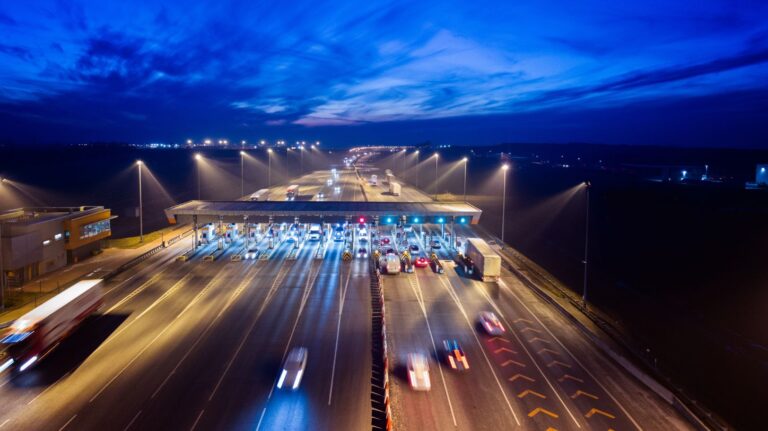The latest ‘EETS Facilitation Platform (EFP) Progress Report‘ has highlighted continued expansion and integration of the European Electronic Toll Service (EETS) market, with interoperability now in operation across 15 European countries.
Covering the period from 1 July to 31 December 2024, the report outlines key developments in EETS provider accreditation, regulatory updates and country-specific tolling advancements, while also addressing challenges in implementing new systems and maintaining cross-border harmonisation.
EETS market penetration has exceeded 60% in at least one country, reflecting growing acceptance among road users. In newly integrated tolling systems, EETS market share surpassed 40% within the first 12 months of operation.
However, market penetration rates vary significantly across Europe, depending on factors such as domestic versus international traffic levels, the timing of EETS adoption, and the regulatory environment in each country.
READ MORE: EETS progress report highlights wider European coverage and CO2-based tolling
The report acknowledges significant ongoing changes in national tolling systems.
In Italy, a transition is underway to a new back-office interface for electronic fee collection. In Germany, the migration to a centralised Toll Detection and Tariffing Service (MED) is set to be completed by 2026.
CO2-based tolling has already been introduced in Austria, Czech Republic and Germany, with Denmark having followed in January 2025. Meanwhile, Slovakia, Slovenia, and Poland have begun preparations to implement similar changes.
Free-flow tolling systems are being expanded on selected roads in France and Italy, and nationwide tolling is being introduced in the Netherlands, while the Alsace region in France is preparing to implement a regional tolling system.
Despite these advancements, the complexity of integrating EETS across multiple toll domains remains a challenge.
The report notes that EETS providers must allocate increasing resources to system maintenance and regulatory compliance, reducing their capacity to expand into new tolling domains.
FREE: Subscribe to the monthly Road User Charging Conference Newsletter!
Certification of new onboard units (OBUs) remains a critical issue, with variations in technical and legal requirements between countries creating delays in accreditation and rollout.
The country report on Italy, provided by AISCAT, outlines several changes in the nation’s tolling system. The multi-lane free-flow system has been expanded to the Asti-Cuneo motorway, with new portals activated in September 2024.
The introduction of a revised standard contract for EETS providers has been designed to facilitate national interoperability, while legal updates on EETS accreditation procedures bring the country into closer alignment with Directive 2019/520/EU.
Looking ahead, the report warns that the pace of EETS expansion could slow due to limited industry resources and ongoing technical adjustments.
The European tolling landscape is expected to continue evolving, with further regulatory shifts, infrastructure upgrades, and cross-border integration efforts shaping the market in 2025.
Discover the key trends and challenges shaping the future of user-financed transportation –spanning tolling, pricing and road usage charging – at Akabo Media’s global Road User Charging Conference series. Join senior decision-makers from around the world as they tackle the issues defining the industry in Brussels (March 2025), Abu Dhabi (May 2025), Miami (September 2025), and Singapore (October 2025). Gain invaluable insights, share innovative ideas and network with global leaders driving the transformation of transportation systems. Click here to learn more and secure your place!





